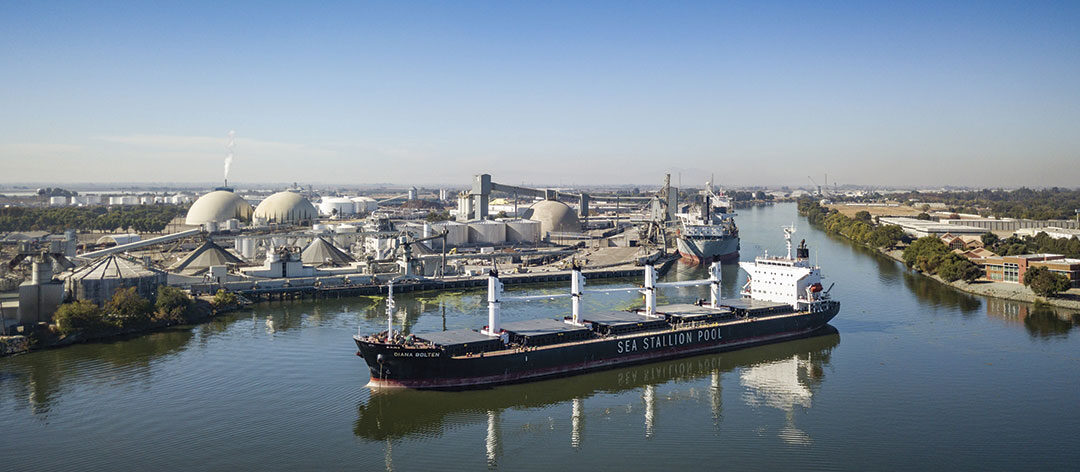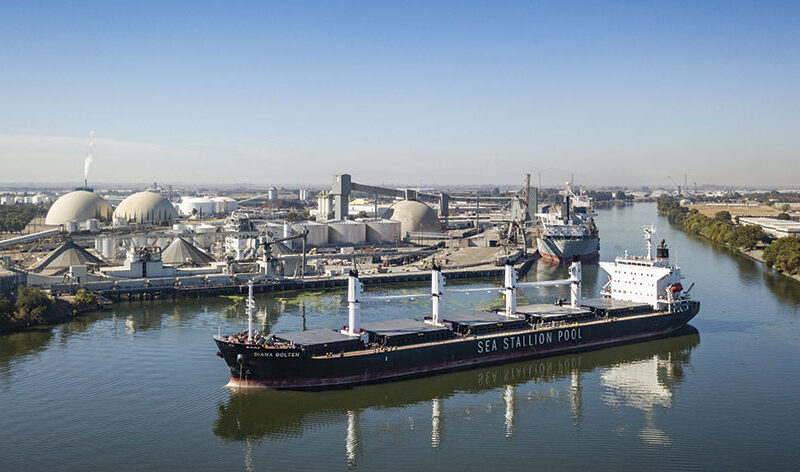
New state funding is slated to clear the way for significant infrastructure upgrades at the Port of Stockton, a major inland deepwater port which is linked to the Pacific Ocean via the San Joaquin River-Stockton Deepwater Shipping Channel.
Located in the heart of California’s fertile San Joaquin Valley, the port serves as a major export center for agricultural products and other commodities such as fertilizer, corn, bulk sulfur, wood pellets, sodium carbonate, and rice. (See the Retro article in this month’s Professional Mariner)
The port was recently awarded $46 million for the Rail Infrastructure Improvements for Sustainable Exports Project through the California State Transportation Agency’s Port and Freight Infrastructure Program.
The funding will support the construction of “new infrastructure to enhance rail capacity, accommodate increased freight tonnage and train frequencies, mitigate potential service disruptions, and reduce long-term repair and maintenance costs,” said Port Director Kirk DeJesus.
“For us, it’s great. It takes us into the realm of a large port and that gives us some different funding options,” he said. “It makes us a net export port which is great…something that we want to be and that’s good for California and the country as a whole.”
The project is a small part of a larger infrastructure improvement plan expected to cost $280 million. Port officials will assess the new funds and make final plans for the project with construction expected to begin later this year.
“Right now, we have 75 miles of track inside the port, but we only have one entrance and it’s a single track,” said DeJesus. The improvements will include the dual-tracking of a large portion of the track that currently feeds into the port and the replacement of a 100-year-old single-track rail bridge.
“With more imports and exports arriving and leaving via the new railways, the port expects to reduce truck traffic on neighboring streets,” said DeJesus. “The improvements to the aging infrastructure should allow the port to double the export volume of the critical compound sodium carbonate.”
Sodium carbonate “is used in making flat glass, glass products, lithium batteries…things like that. So, it’s critical.”
Doubling that volume “obviously brings jobs and stability to the port, as well as a much-needed diversity of commodities,” he said.

